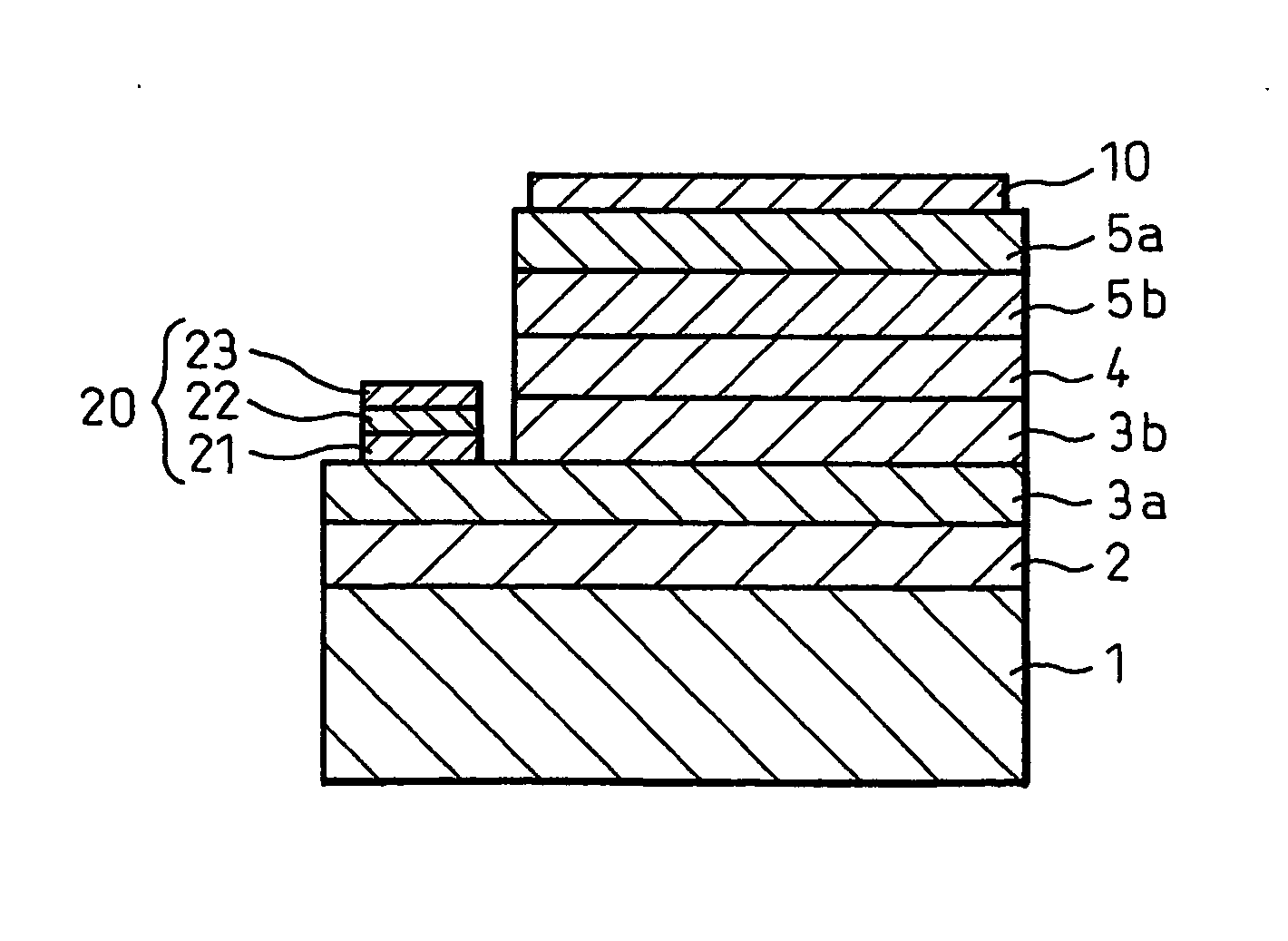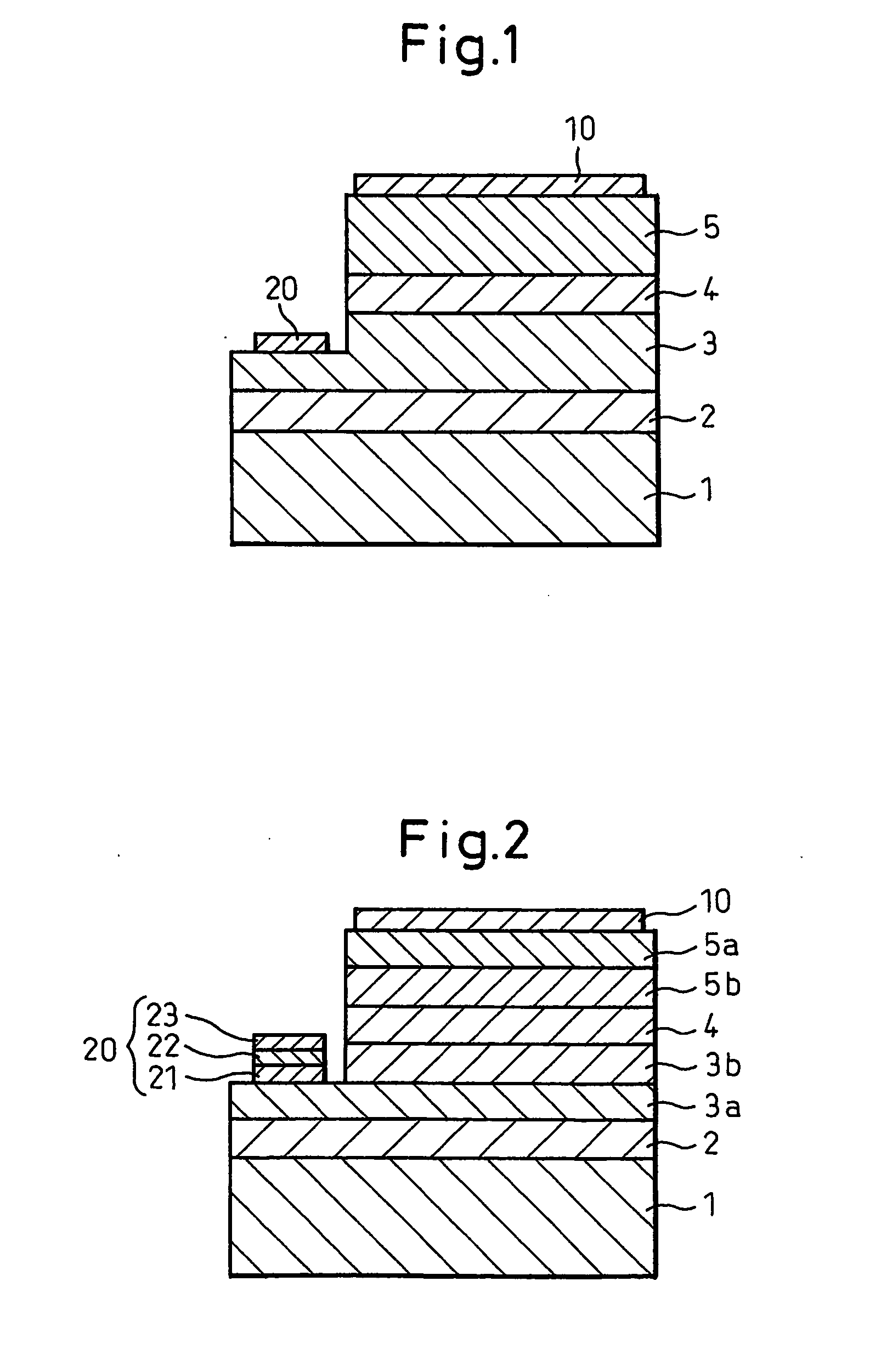Gallium nitride-based compound semiconductor light-emitting device and negative electrode thereof
- Summary
- Abstract
- Description
- Claims
- Application Information
AI Technical Summary
Benefits of technology
Problems solved by technology
Method used
Image
Examples
examples
[0053] The present invention will next be described in more detail by way of Examples and Comparative Examples. Table 1 shows negative electrode materials employed in the Examples and Comparative Examples, and evaluation of characteristics immediately after formation of a negative electrode film and after a heating test. Needless to say, these Examples and Comparative Examples should not be construed as limiting the invention.
[0054]FIG. 2 is a schematic view showing a gallium nitride-based compound semiconductor light-emitting device produced in the present Example.
[0055] The gallium nitride-based compound semiconductor stacked structure employed for fabricating the light-emitting device was produced through the following procedure: an AlN buffer layer 2 was formed on a sapphire substrate 1; and an n-type GaN contact layer 3a, an n-type GaN lower cladding layer 3b, an InGaN light-emitting layer 4, a p-type AlGaN upper cladding layer 5b, and a p-type GaN contact layer 5a were succe...
PUM
 Login to View More
Login to View More Abstract
Description
Claims
Application Information
 Login to View More
Login to View More - R&D
- Intellectual Property
- Life Sciences
- Materials
- Tech Scout
- Unparalleled Data Quality
- Higher Quality Content
- 60% Fewer Hallucinations
Browse by: Latest US Patents, China's latest patents, Technical Efficacy Thesaurus, Application Domain, Technology Topic, Popular Technical Reports.
© 2025 PatSnap. All rights reserved.Legal|Privacy policy|Modern Slavery Act Transparency Statement|Sitemap|About US| Contact US: help@patsnap.com


